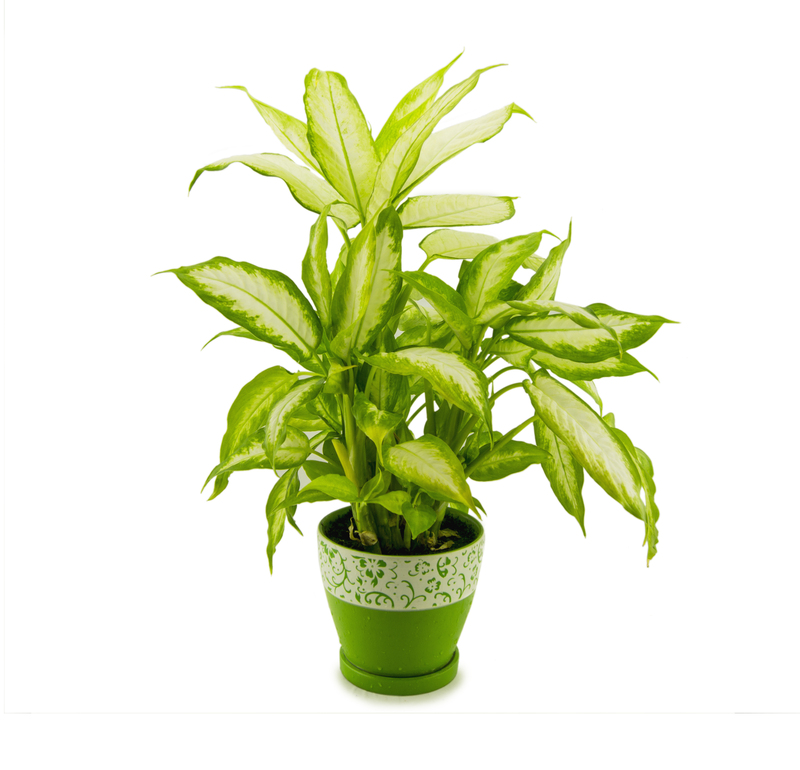Rejuvenating Soil with Organic Waste Alchemy
Posted on 31/05/2025
Rejuvenating Soil with Organic Waste Alchemy: The Transformative Path to Sustainable Agriculture
In today's rapidly changing world, soil health is more important than ever. The demand for lush gardens, high-yielding farms, and sustainable landscaping is growing. Yet, the foundation of these emerges from one key resource: healthy soil. Unfortunately, the widespread use of chemical fertilizers and over-farming has depleted our soils' natural vitality. The solution? Rejuvenating soil with organic waste alchemy--a process where organic waste is transformed into nutrient-rich gold for the earth.
Understanding Soil Depletion and the Need for Renewal
Modern farming and urban gardening habits have continually pushed soils to their limits. Excessive tilling, synthetic fertilizers, and pesticide usage strip the earth of its nutrients, causing:
- Loss of soil fertility
- Decrease in organic matter
- Diminished microbial activity
- Increased erosion and compaction
Without intervention, these issues lead to reduced crop yields, poor plant health, and wider environmental challenges. This explains the rising emphasis on restoring soil with organic waste recycling.

The Science Behind Organic Waste Alchemy
Turning organic waste into soil rejuvenators is a time-honored agricultural technique, now recognized as a leading method in sustainable land management. But what does "organic waste alchemy" really mean?
- Organic Waste: Includes plant clippings, food scraps, manure, and biodegradable materials from agriculture and households.
- Alchemy: Represents the transformative process--decay and decomposition--that turn 'waste' into vital plant nutrition.
Through natural decomposition led by microorganisms, worms, and fungi, these materials break down into humus, a rich, dark organic matter balancing nutrients, retaining moisture, and boosting beneficial soil microbes. This truly is nature's alchemy at work!
Types of Organic Waste Used in Soil Revitalization
Soil rejuvenation is best achieved with a diverse blend of organic inputs. Key sources include:
- Compost: Decayed vegetable scraps, coffee grounds, eggshells, and leaves collect into nutrient-dense compost.
- Animal Manure: Well-rotted manure from horses, cows, or chickens supplies nitrogen, potassium, phosphorus, and micronutrients.
- Green Manures & Cover Crops: Plants like clover or vetch plowed into the soil provide organic matter and fix nitrogen.
- Crop Residues: Corn stalks, wheat straw, and other leftovers return nutrients to the field when tilled under.
- Biochar: Charcoal from plant matter increases soil carbon and enhances nutrient retention.
- Vermicompost: Worm-castings boost microbial activity and plant-available nutrients.
Integrating these forms of organic waste is the mainstay of restorative soil practices.
Benefits of Rejuvenating Soil with Organic Waste Alchemy
The regeneration of soil with organic waste delivers a multitude of ecological and economic advantages:
- Enhanced Nutrient Cycling: Slowly releases macro and micronutrients, reducing reliance on chemical fertilizers.
- Improved Soil Structure: Organic inputs improve soil tilth, aeration, and aggregation.
- Increased Water Retention: Organic matter enhances soil's sponge-like ability to hold water, helping plants through dry spells.
- Boosted Microbial Diversity: Recycled waste feeds beneficial soil bacteria, fungi, and earthworms crucial to plant growth.
- Suppressed Soil-Borne Diseases & Pests: Active soil life competes with harmful pathogens, reducing crop losses.
- Reduced Carbon Footprint: Sequestering carbon in the soil helps mitigate climate change.
- Cost Savings: Minimizing synthetic inputs cuts farming costs over time.
Organic Waste Alchemy Encourages Circular Agriculture
Rejuvenating soil with compost, manure, and crop residues closes the nutrient loop. Instead of wasted resources and pollution, organic materials become assets, supporting regenerative agriculture and sustainable food systems.
Step-by-Step Guide: Alchemizing Organic Waste for Soil Rejuvenation
1. Choosing and Collecting the Right Waste
- Gather diverse organic materials--kitchen scraps, yard clippings, old leaves, coffee grounds, and even used tea bags.
- Avoid adding meat, dairy, or oily foods, as these can attract pests and slow decomposition.
2. Composting: The Heart of Organic Waste Alchemy
Composting is the simplest and most effective way to turn waste into soil nutrients. The process includes:
- Layering browns and greens: Browns are carbon-rich (leaves, straw), greens are nitrogen-rich (food scraps, grass clippings).
- Maintaining correct moisture and aeration by turning the pile every 2-3 weeks and keeping it damp but not soggy.
- Allowing the pile to "cook" for a few months until it is dark, crumbly, and earthy-smelling--ready to enrich soil.
3. Applying the Alchemized Compost to Soil
- Top-dress garden beds or fields with finished compost annually for continuous nourishment.
- Mix compost into potting mixes for stronger seedlings and healthier potted plants.
- Mulch fruit trees and flowers with compost to suppress weeds and improve soil health.
4. Introducing Biochar and Vermicompost
- Biochar: Add charred plant matter to compost or directly to soil for better nutrient absorption and microbe habitat.
- Vermicomposting: Use worms to further break down organic waste, yielding a highly concentrated natural fertilizer.
5. Monitoring and Improving the Soil Over Time
- Regularly test your soil's pH and nutrient levels to guide future applications.
- Adapt your compost ingredients based on plant needs and observed growth trends.
Common Mistakes When Alchemizing Organic Waste - and How to Avoid Them
- Neglecting the carbon-nitrogen balance: Too much green material (nitrogen) makes the pile smelly; too much brown (carbon) slows decomposition. Maintain a ratio of about 2:1 browns to greens.
- Letting compost dry out: A dry compost pile is inactive. Keep it moist, like a wrung-out sponge, for optimal microbial action.
- Adding diseased plants or seeds: High temperatures kill most pathogens, but never risk persistent plant diseases contaminating your finished compost.
- Piling compost directly against tree trunks: Can encourage rot--always leave a gap near stems and trunks.
The Microbial Magic: Why Organic Waste Alchemy Works
The diversity of microorganisms unleashed by decomposing organic matter is at the heart of soil restoration. These tiny yet powerful helpers:
- Break down complex plant and food waste into simple nutrients accessible to plant roots.
- Form symbiotic relationships with plant roots, offering improved nutrient uptake and disease resistance.
- Create healthy soil structure by producing substances that bind particles into stable aggregates.
The result is a living, resilient, and highly productive soil ecosystem--one capable of feeding both crops and the world's growing population.
The Environmental Impact: Closing the Loop with Organic Waste
By embracing organic waste alchemy for soil rejuvenation, communities benefit beyond just higher yields or healthier gardens. The process:
- Dramatically lowers landfill waste, reducing methane emissions and environmental toxicity.
- Prevents nutrient runoff that harms waterways and causes algal blooms.
- Increases carbon sequestration--locking carbon away in the earth, thus helping battle climate change.
- Promotes biodiversity both above and below the soil.
Practical Tips on Starting Your Own Organic Waste Alchemy Journey
- Begin collecting organic waste in a kitchen or outdoor compost bin. Every little bit helps!
- Involve the community--organize neighborhood compost drives or garden swaps for greater impact.
- Use multiple alchemy methods: Pair classic composting with worm bins or try making biochar if you have garden waste to spare.
- Educate the next generation: Teach children or students about the cycle of food, waste, and soil health for lasting change.
- Document results: Keep records of plant growth, yield, or soil quality to showcase the power of revitalizing soil with organic waste.
Advanced Soil Alchemists: Go Beyond the Basics
Once you're comfortable with home composting, try these high-impact techniques:
- Bokashi fermentation for quick breakdown of food waste, including some meats and dairy.
- Compost teas--a liquid version of compost used to inoculate soils and foliage with beneficial microbes.
- Sheet mulching or "lasagna gardening" layering cardboard, manure, and compost to transform poor soils fast.

Case Studies: Organic Waste Alchemy Success Stories
Urban Gardeners Transforming Vacant Lots
In cities across the globe, community gardens and urban agriculture projects use composted food waste to convert abandoned lots into vibrant produce oases, improving neighborhood food security and soil quality.
Organic Farmers Closing the Nutrient Loop
Large-scale organic farms now regularly employ cropland composting, cover crops, and manure amendments. The result: higher yields, resilient crops, and soils that keep getting better over time.
Schools Teaching Soil Alchemy
More educators integrate composting into science and environmental curricula, cultivating the next generation of "soil alchemists" who understand and practice sustainable land stewardship.
Conclusion: The Future of Soil is in Your Hands
"Rejuvenating soil with organic waste alchemy" is not just a trend--it's an essential movement for food security, ecosystem health, and climate resilience. With every peel tossed in a compost bin, every garden bed amended with mature compost, you directly contribute to a world of healthier crops, cleaner water, and a regenerative future.
Whether you're a backyard gardener, professional farmer, landscaper, or eco-conscious consumer, now is the time to join the organic waste alchemy revolution. Empower the earth, restore vitality, and watch your land bloom--one handful of compost at a time.
```
